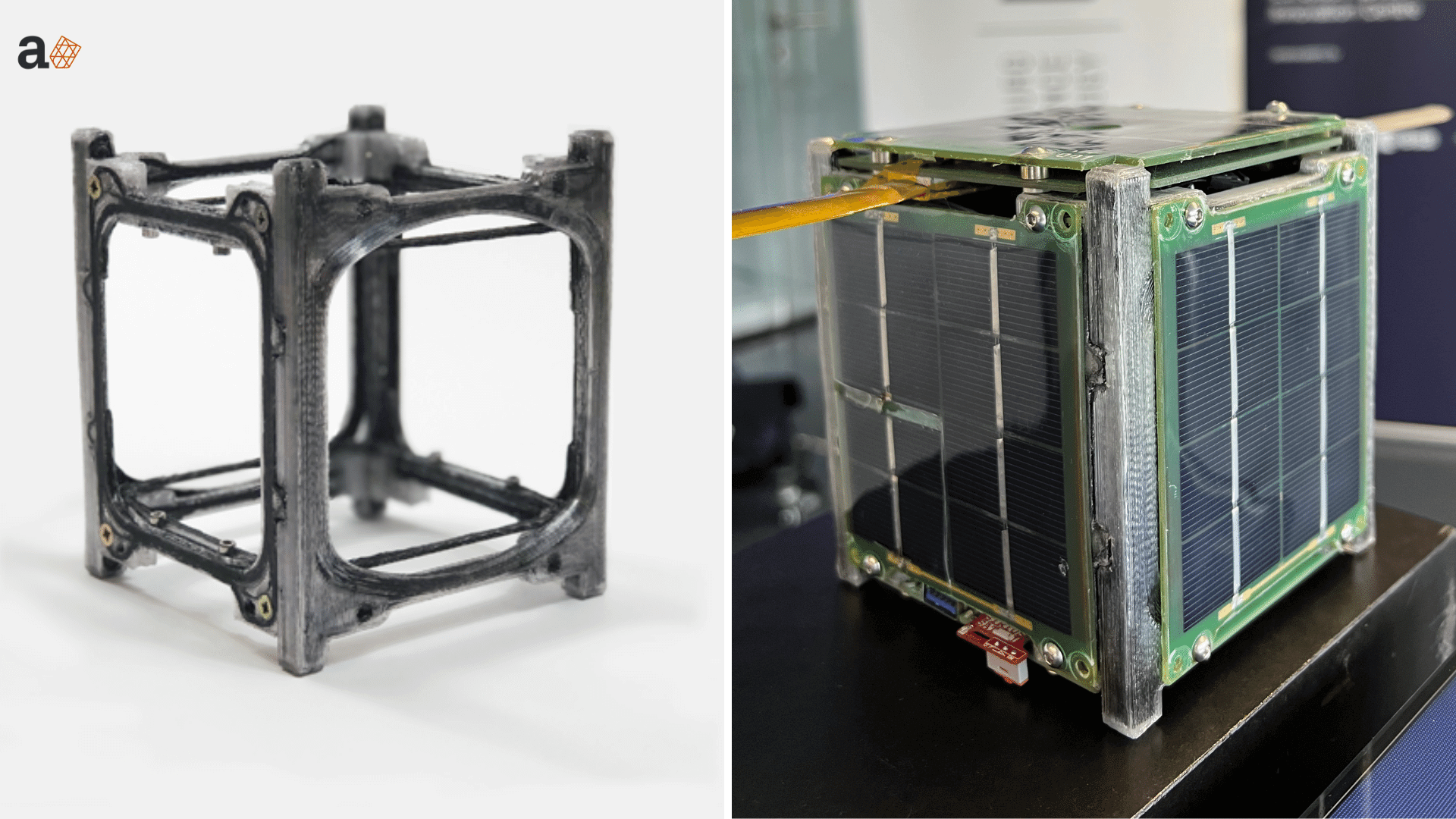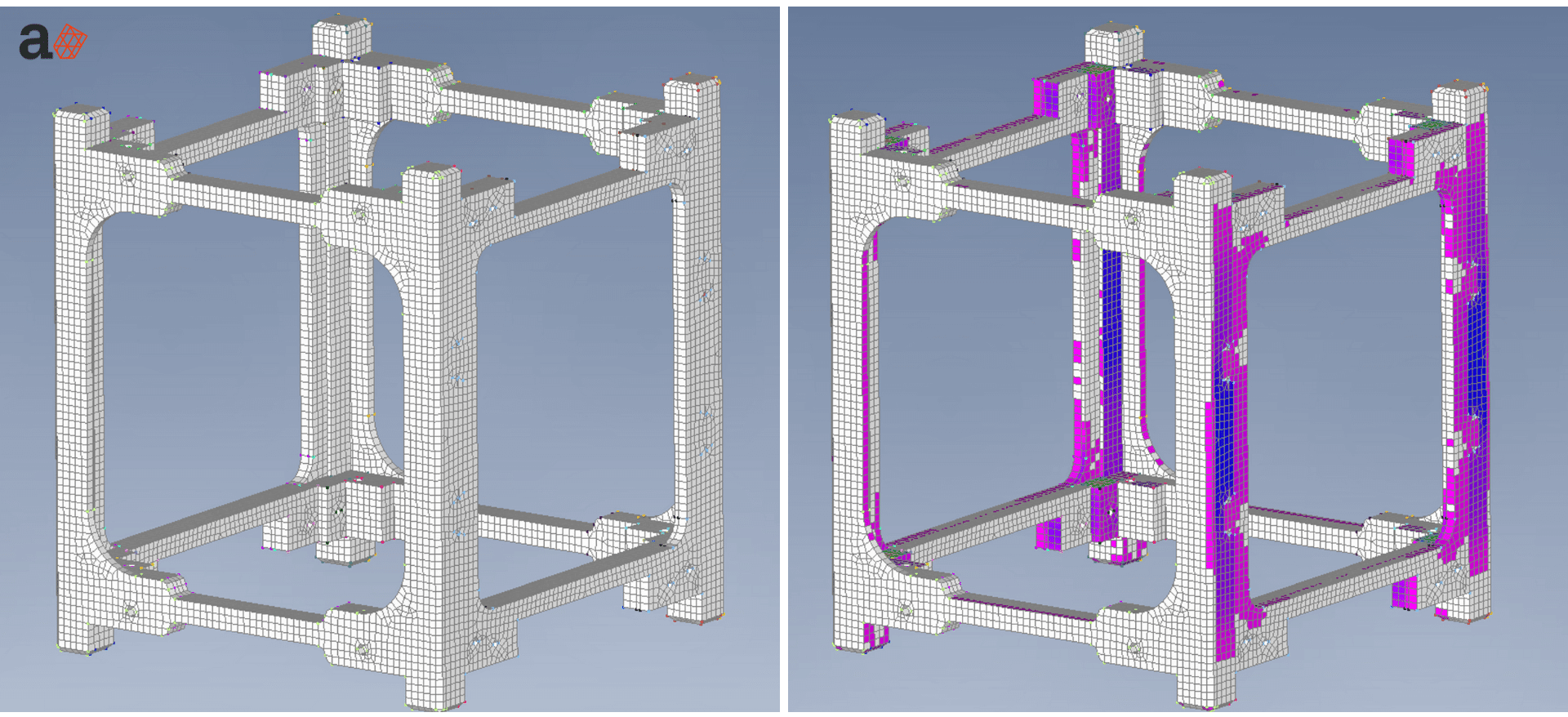
Advantages of Chain CubeSat Nano Satellites:
- They are reliable: in case of failure of one or more elements of the system, communication is not broken.
- Cover areas remote from the equator.
- Have a low signal delay: up to 80 ms.
CubeSats are especially popular among small spacecraft: they allow both R&Ds and businesses to participate in space programs. Standardized design of such space vehicles allows to reduce the cost and time of development and manufacturing.

Google and Elon Musk’s SpaceX alone plan to launch some 50,000 cubesats in this decade2.
Lightweight composite 3D printed 3-unit CubeSat concept by Anisoprint
At Anisoprint, we developed an enhanced design of a CubeSat with carbon fiber reinforcement and topological optimization.
In his thesis, Nikita Glushko, Anisoprint Research Engineer, explains: “Additive manufacturing and methods of topological optimization open broad opportunities to increase the weight efficiency of small spacecraft.”

Anisoprint industrial solution PROM IS 500 makes it possible to manufacture components strong enough to resist high overloads to get through the gravity well and also thermally resistant, for operating in the open space environment with a temperature range ±150 °C. This is why a high temperature plastic (PEEK) was chosen for the case. In contrast, non-engineering plastics may have a working temperature range around –50 °C/ +100 °C which is suitable for applications on earth.
With an enhanced design and directional reinforcement — customized fiber paths — the weight of the designed housing is only 200.6 grams, which is 49.7% less than the weight of similar aluminum ones produced by traditional manufacturing methods.

CFRPs (Continuous Fiber Reinforced Polymers) have a pronounced anisotropy of properties, which manifests itself in a high modulus of elasticity along the fibers, and low in transverse directions, as well as a low shear modulus. From this point, proper material orientation is very important for structural application. Anisoprinting gives us freedom of fiber placement, while the TO (Topology Optimization) helps us to get rid of ineffective material zones.
| OPTIMIZED COMPOSITE 3-UNIT CUBESAT PARAMETERS | |
|---|---|
| Material | PEEK |
| Weight | 200.6 gr |
| Operation temperature range | ±150 °C |
| Safety factor | 1.5 |
| Buckling safety factor | 4.16 |
| First natural frequency | 230 Hz |
Enabling low-cost space exploration with Composite 3D printing
The mass production and launch of such satellites naturally and directly influences operational costs in the aerospace industry. These included expenses become omnipresent and inevitable for any mission and task unless composites take their rightful place and lift this burden from both business and consumers.
Anisoprint team has a strong background in the space industry, participates in Startup Support Program (SSP) managed by European Space Resources Innovation Centre (ESRIC) and partnered with Nanoracks Space Outpost Europe. The CubeSat belongs to a series of aerospace projects by Anisoprint: Lunar rover v1 and Lunar Rover v2.

WANT to start manufacturing lightweight carbon frames for space satellites? Contact our team:
[hubspot type=”form” portal=”25897477″ id=”74952842-0877-4fd8-9c76-a728c5860746″]